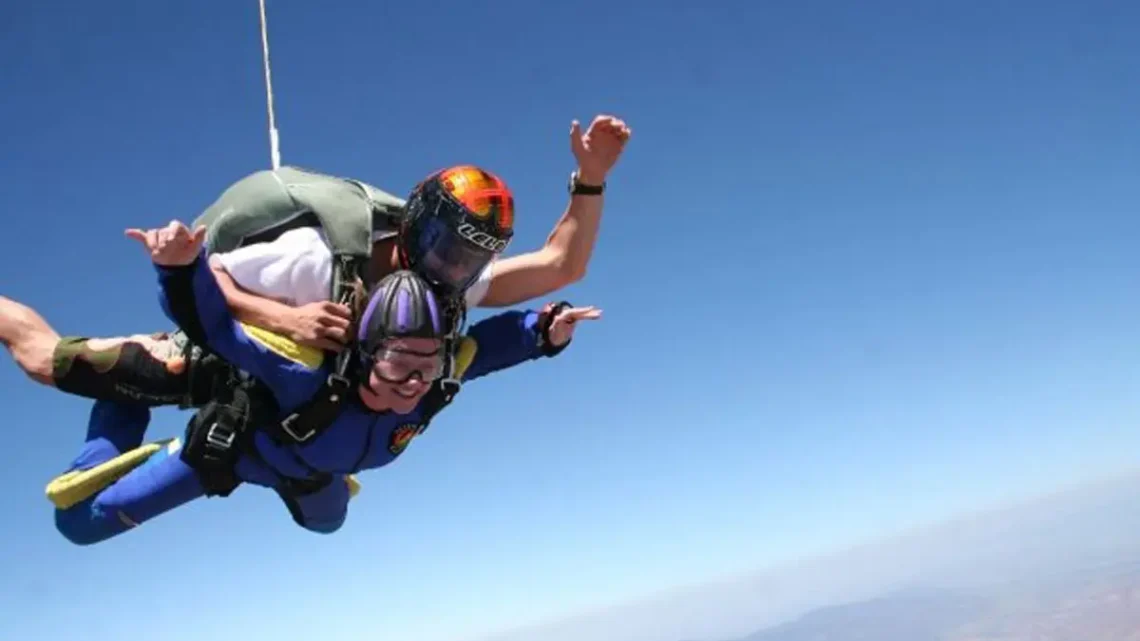
First-Time Skydivers: What to Expect from Your Sky Diving Adventure
Skydiving is one of those life-changing experiences that many people dream about but feel nervous to actually try.
The thought of stepping out of a perfectly good airplane at thousands of feet above the ground can be intimidating. But here’s the truth: skydiving for the first time is not only safe but also one of the most exhilarating adventures you’ll ever have.
Trending Now!!:
If you’re planning your very first jump, this guide will walk you through everything you need to know — from the step-by-step process to what gear you’ll be using, plus handy travel tips like where to stay, what to eat, and how to make the most of your sky diving trip.
The Journey Begins: Preparing for Your First Skydive
Before you even board the plane, there’s a process designed to make you feel comfortable and safe.
- Check-In and Paperwork Once you arrive at the dropzone, you’ll complete a bit of paperwork (liability waivers and health forms). This is standard procedure at all skydiving centers.
- Safety Briefing Your instructor will explain the basics of body positioning, how the parachute works, and what to expect during freefall and landing. First-time jumpers almost always do a tandem skydive, meaning you’re harnessed securely to a licensed professional.
- Gear Up You’ll be fitted with a harness, goggles, and a jumpsuit if needed. Your instructor wears the parachute and controls the jump, so your job is mainly to listen and enjoy.
The Big Moment: Boarding and the Jump
The Plane Ride Up
The ride to altitude usually takes about 15–20 minutes. This is when your nerves might kick in, but many first-timers say this is the most exciting part. The views from above — mountains, coastlines, or farmlands — are breathtaking before you even exit the plane.
The Exit
When the door opens, wind rushes in, and your heart races. Your instructor will give the signal, and together you’ll make the leap into the sky.
Freefall
For 30–60 seconds, you’ll be in freefall, traveling around 120 mph. Surprisingly, it doesn’t feel like falling — more like floating on a cushion of air.
The Parachute Ride
At about 5,000 feet, your instructor deploys the parachute. Suddenly, the noise stops, and you’re gliding quietly above the earth. You’ll even have the chance to steer the canopy before landing.
Landing Safely
Landing is smoother than most people expect. Your instructor will guide you to lift your legs so they can handle the landing. Many landings feel like sliding onto grass, gentle and controlled.
What to Wear and Bring
- Clothing: Comfortable, weather-appropriate clothes (athletic wear works best).
- Shoes: Sneakers or lace-up shoes. Avoid sandals or boots with hooks.
- Extras: Bring water, snacks, and don’t forget sunscreen if you’re jumping in a sunny location.
Local Logistics: Making It a Full Trip
Skydiving dropzones are often located near scenic spots. Why not turn your jump into a full adventure?
- Food: Many centers have small cafés. Otherwise, check out local diners or restaurants nearby.
- Lodging: Some dropzones have partnerships with local hotels or camping options if you’re planning an overnight stay.
- Attractions: Combine your jump with sightseeing. For example:
- In Florida, skydiving near Miami offers beaches, nightlife, and Cuban cuisine.
- In Arizona, desert views pair perfectly with a road trip to the Grand Canyon.
- In California, you can skydive near wine country and spend the evening at local vineyards.
Safety First: Is Skydiving Safe?
Modern skydiving equipment is extremely reliable. Tandem instructors are highly trained, with hundreds or even thousands of jumps under their belts. Parachutes are equipped with backup systems that deploy automatically if needed.
Statistically, tandem skydiving has a safety record comparable to driving to the dropzone itself.
Tips for First-Time Skydivers
- Eat light — don’t skip meals, but avoid anything too heavy.
- Listen carefully during the briefing; it’s short but important.
- Relax and breathe during freefall. You’ll enjoy it much more.
- Book early in the morning — winds are usually calmer, and you’ll avoid delays.
- Splurge on the video package — you’ll want to relive this moment forever.
FAQs About First-Time Skydiving
Q: How high do you jump from? Most tandem jumps happen between 10,000–14,000 feet above the ground.
Q: Do I need any prior training? No. Your instructor handles everything. You just need to follow simple instructions.
Q: How long does the whole experience take? Plan for 3–4 hours, including paperwork, training, the plane ride, and your jump.
Q: What if the weather is bad? Skydiving depends on safe conditions. If it’s too windy, rainy, or cloudy, your jump may be rescheduled.
Q: Can I bring my own GoPro? For safety reasons, first-timers usually cannot bring their own cameras. Instructors carry special mounts designed for skydiving.
Q: What does it feel like? Most first-timers say freefall feels more like flying than falling. The sensation is thrilling but not stomach-dropping like a roller coaster.
Final Thoughts
Your first skydive is more than just a bucket-list item — it’s a personal milestone. From the nervous anticipation to the rush of freefall and the peaceful parachute ride, every second is unforgettable.
Whether you’re jumping near the ocean, the desert, or the mountains, the experience is a powerful reminder of how thrilling life can be when you take the leap.


